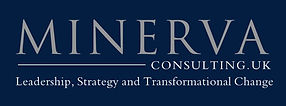Fog, Friction and Transformation Strategy Execution
- Jeremy Tozer

- Apr 16, 2020
- 3 min read
All change and transformation requires a strategy to be implemented (which is likely to include enabling projects). All strategy to improve performance and capability involves change and innovation. So in this article the terms are used interchangeably!
VUCA Creates ‘Fog’
Every organization, large or small, is operating in an environment which is influenced to a greater extent than has historically been the case by:
The range of ‘ecosystem players’ and relationships to be managed.
People’s changing expectations, aspirations, and societal values.
Political imperatives, regulatory and environmental change.
Paradoxes (e.g. ‘globalization and fragmentation/localization’).
Disruptive innovation reflected in new products, or current products delivered by new methods and/or to a new market segment.
Information and Communication Technologies (ICT) have enabled all these influencers to interconnect and interplay more easily and more rapidly; driving turbulence and an exponential rate of change. This ‘hypercompetitive’ operating environment is often described by the mnemonic VUCA (a term first used by the US Army War College in 1987):
Volatility - a situation is unstable and may change very rapidly.
Uncertainty - how a situation develops is not predictable; both the set of variables relating to the problem, and information about the variables may be imperfect, incomplete or unknown.
Complexity - the situation is dynamic with a large number of non-linear interacting elements producing disproportionately large consequences.
Ambiguity - Multiple interpretations exist for information relating to a situation, causal relationships may be unclear
VUCA is both an outcome of the turbulent external environment, and a driver of it.
What does this mean in practical terms for you? Put simply, VUCA creates the ‘fog’ undermines whatever plan you are executing, changes your operating context, and obfuscates, and hinders decision making. So your approach to strategy development, execution and evolution (essentially decision making and communication at all levels), needs to have built into it the means to rise above the fog of VUCA and to minimise its effects.

Friction Makes the Difficult Seemingly Impossible
Internally, organizations are often full of the ‘friction’ which makes getting things done difficult. Some sources are unique to the individual (agendas, motivation, inclination and so on). Some sources are structural (accountability/authority misalignment and unclear role-relationships in matrix structures; and some are systemic ‘practices’ and this is what we’ll explore here.
‘Ways and means’ systemic friction includes imperfect decision-making, planning and communication practices. Imperfect design (or lack of any deliberate design) results in practices which fail to promote critical and incisive thinking —the right questions about ‘higher intent’, desired effects, ‘future state’ and purpose, implications, factors affecting achieving the aim (and deductions about tasks, projects and the priority of work), the overall options to achieve the mission and their pros and cons and so on, are not asked. These leadership practices are often not inherently dynamic, so they fail to adapt plans to actual progress and changed circumstances to ensure that that which is strategically desirable is tactically possible.
This is compounded by unclear modes of thinking in leaders who may make false assumptions rather than valid deductions from the information that is available, and unclear, ambiguous and imprecise use of language to express thinking which results in misunderstandings. These practices and often lack the ‘social process’ which emotionally engages people, secures their commitment and exploits their expertise and innovative ideas —facilitated discussion and regular dialogue is absent; and decisions are simply ‘given’.
Imperfect communication practices can include imperfect design or ‘structure’ of the message, failure to reach the people who need to be reached and ineffective means of disseminating the message —relying on emailed 40 slide presentations rather than briefing people face to face or over the telephone when there is opportunity for dialogue. This is compounded by unclear, imprecise and ambiguous use of language, wrongly interpreted information, and failure by the 'sender' to check for common understanding by asking specific open questions.
The Execution Gap
The combination of ‘fog and friction’ results in a gap between desired actions on the front-line —the things the CEO would want to see happen— and the actual actions of people on the front line. In turn, this leads to a gap between expected business performance and actual business performance.
Crossing the Gap: Clarity and Emotional Engagement
The challenge of leadership then, is to create ‘clarity’ and 'emotional engagement' at all levels and across the matrix on a dynamic and systemic basis.

Clarity means creating an effective understanding of context and 'higher intent' —the higher level mission, or desired 'end state' and its purpose, the intentions and plans of your boss and your boss's boss; and what this means for the priority of work and resource allocation —and alignment of thought and activity to that higher intent. It also includes having clear role relationships and the alignment of accountability and authority; not just vertically but laterally to ensure effective co-ordination across the matrix. The approach to creating clarity must be inherently dynamic to adapt plans to actual progress and changed context, and systemic to ensure alignment throughout the enterprise. This is what makes organizations agile.




Comments